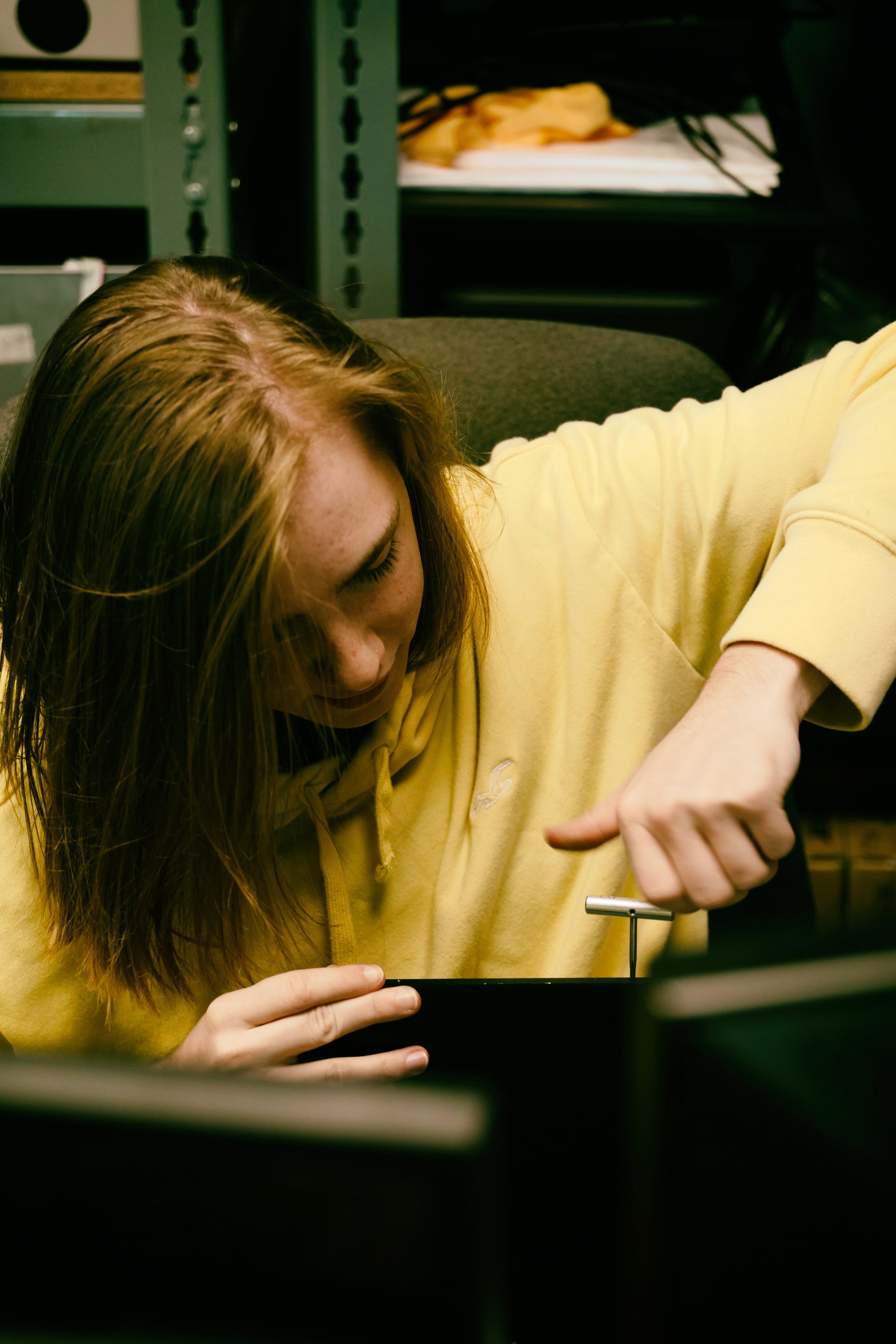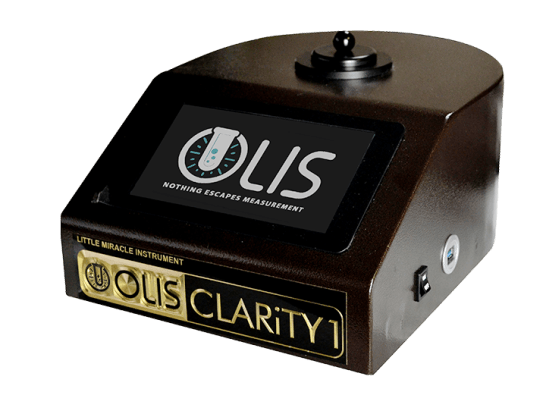The Ultimate Guide To Uv/vis
The Ultimate Guide To Uv/vis
Blog Article
Unknown Facts About Uv/vis/nir
Table of ContentsThe Facts About Spectrophotometers RevealedThe smart Trick of Uv/vis That Nobody is DiscussingSome Of Circular DichroismThe Buzz on SpectrophotometersAbout Uv/vis/nirFacts About Uv/vis Uncovered7 Simple Techniques For Uv/visExcitement About Uv/visGet This Report on Circular DichroismNot known Facts About Circular DichroismCircular Dichroism Can Be Fun For Everyone8 Simple Techniques For Uv/visRumored Buzz on Uv/vis
It is then scanned through the sample and the reference options. Portions of the occurrence wavelengths are sent through, or reflected from, the sample and the recommendation. Electronic circuits convert the relative currents into linear transmission percentages and/or absorbance/concentration worths.The transmission of a referral substance is set as a standard (information) value, so the transmission of all other substances are taped relative to the initial "zeroed" compound. The spectrophotometer then converts the transmission ratio into 'absorbency', the concentration of specific parts of the test sample relative to the initial substance.
Since samples in these applications are not easily available in large amounts, they are specifically fit to being analyzed in this non-destructive technique. In addition, valuable sample can be saved by utilizing a micro-volume platform where just 1u, L of sample is required for total analyses. A short explanation of the procedure of spectrophotometry consists of comparing the absorbency of a blank sample that does not contain a colored compound to a sample that consists of a colored compound.
Not known Facts About Circular Dichroism
In biochemical experiments, a chemical and/or physical residential or commercial property is selected and the treatment that is used is specific to that property in order to derive more details about the sample, such as the amount, purity, enzyme activity, etc. Spectrophotometry can be utilized for a number of strategies such as identifying optimal wavelength absorbance of samples, identifying optimum p, H for absorbance of samples, identifying concentrations of unidentified samples, and determining the p, Ka of different samples.: 21119 Spectrophotometry is likewise a valuable procedure for protein filtration and can also be used as an approach to develop optical assays of a compound.
It is possible to know the concentrations of a two part mix utilizing the absorption spectra of the basic options of each component. To do this, it is needed to understand the termination coefficient of this mixture at 2 wave lengths and the extinction coefficients of options that contain the known weights of the 2 parts.

How Uv/vis can Save You Time, Stress, and Money.
The majority of spectrophotometers are used in the UV and visible regions of the spectrum, and some of these instruments also run into the near-infrared Area. The concentration of a protein can be approximated by determining the OD at 280 nm due to the existence of tryptophan, tyrosine and phenylalanine (https://pagespeed.web.dev/analysis/https-olisclarity-com/ft59obxjpp?form_factor=mobile).
This approach needs a spectrophotometer capable of measuring in the UV region with quartz cuvettes.: 135 Ultraviolet-visible (UV-vis) spectroscopy involves energy levels that delight electronic shifts. Absorption of UV-vis light thrills molecules that are in ground-states to their excited-states.
20. 8 O.D. Ink makers, printing companies, textiles vendors, and a lot more, require the information supplied through colorimetry. They take readings in the area of every 520 nanometers along the noticeable area, and produce a spectral reflectance curve or a data stream for alternative presentations. These curves can be used to evaluate a new batch of colorant to inspect if it makes a match to specs, e.
Our Circular Dichroism Statements
Conventional visible area spectrophotometers can not identify if a colorant or the base material has fluorescence. This can make it hard to handle color problems if for instance several of the printing inks is fluorescent. Where a colorant consists of fluorescence, a bi-spectral fluorescent spectrophotometer is utilized (http://www.video-bookmark.com/bookmark/6114703/olis-clarity/). There are two significant setups for visual spectrum spectrophotometers, d/8 (spherical) and 0/45.
Researchers utilize this instrument to measure the quantity of compounds in a sample. In the case of printing measurements 2 alternative settings are frequently used- without/with uv filter to control better the result of uv brighteners within the paper stock.
The Best Guide To Spectrophotometers
Some applications need small volume measurements which can be performed with micro-volume platforms. As described in the applications area, spectrophotometry can be used in both qualitative and quantitative analysis of DNA, RNA, and proteins. Qualitative analysis can be used and spectrophotometers are utilized to tape spectra of substances by scanning broad wavelength areas to determine the absorbance residential or commercial properties (the intensity of the color) of the compound at each wavelength.

The smart Trick of Spectrophotometers That Nobody is Discussing
One significant aspect is the type of photosensors that are available for various spectral regions, but infrared measurement is likewise difficult due to the fact that essentially everything produces IR as thermal radiation, specifically at wavelengths beyond about 5 m. Another issue is that several materials such as glass and plastic absorb infrared, making it incompatible as an optical medium.
Samples for IR spectrophotometry might be smeared between 2 discs of potassium bromide or ground with potassium bromide and pushed into a pellet. Where liquid solutions are to be determined, insoluble silver chloride is used to build the cell. Spectroradiometers, which run almost like the noticeable area spectrophotometers, are designed to determine the spectral density of illuminants. 2013. p. 13. Allen, DW; Cooksey, C; Tsai, BK (Nov 13, 2009). "Spectrophotometry". Recovered Dec 23, 2018. Ninfa AJ, Ballou DP, Benore M (2010 ). Fundamental Lab Techniques for Biochemistry and Biotechnology (2nd ed.). Hoboken: Wiley & Sons. ISBN 9780470087664. OCLC 488246403. Schwedt G (1997 ). The vital guide to analytical chemistry.
Chichester, NY: Wiley. pp. 1617. ISBN 9780471974123. OCLC 36543293. Ninfa AJ, Ballou DP (2004 ). Essential lab approaches for biochemistry and biotechnology. Hoboken: Wiley. p. 66. ISBN 9781891786006. OCLC 633862582. Rendina G (1976 ). Philadelphia, PA: W. B. Saunders Company. pp. 46-55. ISBN 0721675506. OCLC 147990. Oke, J. B.; Gunn, J. E.
9 Simple Techniques For Circular Dichroism
"Secondary basic stars for outright spectrophotometry". The Astrophysical Journal. 266: 713. Bibcode:1983 Ap, J..266..713 O. doi:10. 1086/160817. Ishani, G (2006 ). "The first business UV-vis spectrophotometer". p. 100. Retrieved Dec 23, 2018. Simoni, RD; Hill, RL; Vaughan, M; Tabor, H (Dec 5, 2003). "A Traditional Instrument: The Beckman DU Spectrophotometer and Its Innovator, Arnold O.
278 (49 ): e1. doi:. ISSN 1083-351X. Beckman, A. O.; Gallaway, W. S.; Kaye, W.; Ulrich, W. F. (March 1977). "History of spectrophotometry at Beckman Instruments, Inc". Analytical Chemistry. 49 (3 ): 280A300A. doi:10. 1021/ac50011a001. "Hewlett Packard: Compound Identification with HP 8450 A UV Visible Spectrophotometer". Analytical Chemistry. 51 (12 ): 1188A1189A. 1979-10-01.
Ninfa AJ, Ballou DP, Benore M (2015 ). Essential Laboratory Techniques for Biochemistry and Biotechnology (3, rev. ed.). circularly polarized luminescence. Lab Equipment.
A Biased View of Circularly Polarized Luminescence
"Applied Spectrophotometry: Analysis of a Biochemical Mix". Biochemistry and Molecular Biology Education. Journal of Biochemistry Education.
All about Circular Dichroism
U.S. Department of Commerce National Bureau of Standards unique publication; 378. Washington, D.C.: U.S. National Bureau of Standards.
The process starts with a controlled light that lights up the analyzed sample. In the case of reflection, as this light interacts with the sample, some is soaked up or released. The released light travels to the detector, which is examined, quantified, and provided as industry-standard color scales and indices.
All terms are examined over the visible spectrum from 400 to 700 nm. In the case of transmission, when the light connects with the sample, it is either absorbed, shown, or transmitted.
About Circular Dichroism
Examples include APHA (American Public Health Association) for watercolor and purity analysis, ASTM D1500 for petrochemical color analysis, edible oil indices utilized in food, and color analyses of beverages. The streamlined mathematics looks like this:. Where T is the transmission coefficient. All terms are examined over the visible spectrum from 400 to 700 nm.
Image Credit: Matej Kastelic/ Dr. Arnold J. Beckman and his colleagues at the National Technologies Laboratories first invented the spectrophotometer in 1940. In 1935 Beckman founded the business, and the discovery of the spectrophotometer was their most ground-breaking innovation.
Circularly Polarized Luminescence - Truths
99% accuracy. With time, researchers kept enhancing the spectrophotometer style to enhance its performance. For instance, the UV abilities of the model B spectrophotometer were enhanced by replacing the glass prism with a quartz prism. Eventually, the Model DU was developed, containing a hydrogen lamp and other enhancements. This instrument was used in industrial laboratories, clinics, and chemistry and biochemistry departments.
After 1984, double-beam variations of the device were designed. The addition of external software with the provision of onscreen displays of the spectra was available in the 1990s. Normally, a spectrophotometer is comprised of two instruments, namely, a spectrometer and a photometer. A standard spectrophotometer contains a light source, a monochromator, a collimator for straight beam transmission, a cuvette to place a sample, and a photoelectric detector.
More About Spectrophotometers
There are various types of spectrophotometers in numerous shapes and sizes, each with its own function or functionality. A spectrophotometer identifies just how much light is shown by chemical elements. UV/Vis. It determines the distinction in light strength based on the overall amount of light introduced to a sample and the quantity of beam that travels through the sample solution
Based on the instrument's style, the sample is positioned in between the spectrometer and the photometer. After the light is gone through the sample, the photometer measures its intensity why not look here and shows the reading. A spectrophotometer is utilized to identify the concentration of both colorless and colored solutes in a solution. This instrument is utilized to identify the rate of a reaction.
Report this page